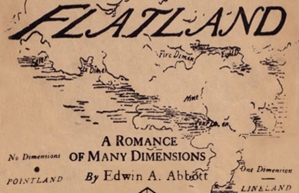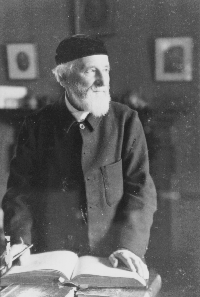 Published in 1884, Flatland chronicles the adventures of a 2D square who is introduced to space land- the world of the 3D. The book explores ignorance and social classes however the main concept is extra dimensions.
Published in 1884, Flatland chronicles the adventures of a 2D square who is introduced to space land- the world of the 3D. The book explores ignorance and social classes however the main concept is extra dimensions.
At 80 pages long, Edwin A. Abbott didn’t give himself much room to write this slightly scientific novella. Indeed, he spends the first 40 or so pages explaining how life in Flatland works, them being only able to see straight lines of varying brightness. The main character, a square, then goes on to explain his dreams of lineland, a one dimensional kingdom, his brief journey into three dimensional space land and also a fleeting encounter with pointland, a no dimensional spot.
Throughout the book, whether a comment on society at the time or not, the square in the story expresses explicit understanding of societal classes. Isosceles triangles measured by the size of their angle, polygons ascending the classes as their sides grow more numerous, being born into an unchangeable class and the inferiority of women, who are merely straight lines in flatland. These are core concepts in the book and many of the explanations build upon this information as the square is constantly referring back to superior circles and inferior women.
The main concept conveyed in this book though is understanding of dimensions and the possibility of more. After flatland, the first dimension we visit if lineland. The king of lineland is completely ignorant to anything outside moving back and forth and is mesmerised by the square’s ability to move in and out of lineland, yet he refuses to believe the square’s explanation for his ability. The square is then introduced into spaceland, first by a description from a sphere, then by being taken out of his 2D plane. At first, however, the square did not believe in the existence of three dimensions and denied it with great passion, just as the king of lineland denied two dimensions existed. Through his interactions with a three dimensional sphere, the square raises the question of more dimensions, possibly four or five, or even six or seven. The sphere denies any more than three exist, just as the square and king of lineland denied extra dimensions. This is perhaps the most profound idea in the entire book of Flatland, that we ourselves may be ignorant of a fourth or even fifth dimension of space. Even though it takes about 40 pages to express this idea, it is well worth the read as the story elements and appreciable characters make it much more insightful than a plain old scientific theory.
